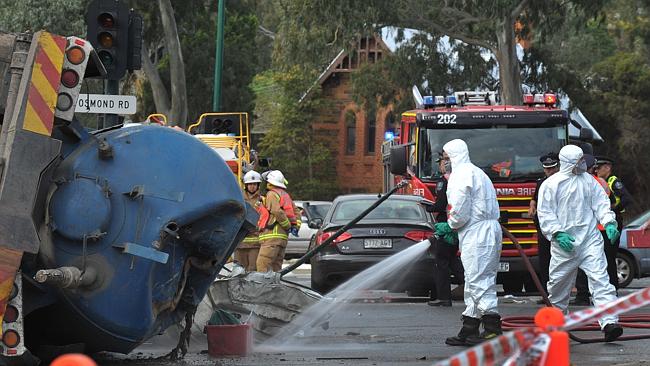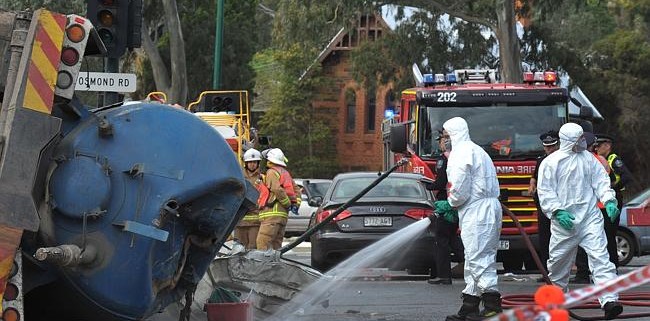Trucks’ Grounding and Inspections cost Company $20 million

Hazmat workers hose down the road after the tanked split thousands of litres of effluent on to the road. Picture: Roger Wyman via Adelaidenow.com.au
Chain of Responsibility compliance is an important aspect of a company’s operations because offences can cost companies millions, millions that most companies cannot afford to lose. The consequences are even more dire when an accident takes place and particularly if people are injured or killed during these crashes. An example of a company which is losing out millions is Transpacific. The company’s fleet and asset management and other reforms are expected to cost them around $20 million.
In the road transport industry we are well aware of the fact that every minute off the road is costly, that is why it comes as no surprise that Transpacific’s grounding of its fleet following an accident in August is expected to run at a cost of between $18 million and $20 million.
One of the company’s trucks was involved in a crash on August 19 this year which prompted the waste services firm to ground its fleet of nearly 300 heavy duty trucks.
The incident in August involved a heavy rigid truck which lost control on the South Eastern Freeway. The incident resulted in 2 fatalities and the driver of the truck was also badly injured. The horrific accident resulted in the trucking industry calling for an analysis of truck accidents and speed conditions in South Australia. It also led to many of them calling for freeway conditions to be reviewed.
The incident served as a major wake-up call to the industry and to Transpacific in particular because the company retired a range of its older vehicles. In an article on Fullyloaded.com.au the company’s actions were explained:
Following the incident, Transpacific retired a range of older vehicles that “were either surplus to current operational requirements, being kept solely as spares, or whose age makes them no longer operationally viable”, during its audit and review process.
About $7 million of the hit relate to vehicle repairs, with the rest down to roadworthy inspections, subcontracting costs, lost revenue and vehicle write-offs.
Source: http://www.fullyloaded.com.au
Transpacific CEO Robert Boucher also stated:
“As part of our process to return the fleet to service, we are addressing our policies and procedures in relation to vehicle maintenance and road safety and are focused on improvements in the key areas of fleet maintenance, driver training and asset management, which will improve the durability of our operations,”
Source: http://www.fullyloaded.com.au
The accident which motivated the actions by Transpacific involved a truck was travelling at 151kph at base of South Eastern Freeway. The truck came to rest after colliding with 3 cars and killing 2 people. It was suggested that trucks travel at no more than 60kph on this stretch of the freeway.
Transpacific weren’t the only ones who moved to act after the tragic accident, the police also announced soon after the crash that they would be cracking down on the truck industry in South Australia’s freeways particular the South Eastern Freeway which received a lowered speed limit for trucks. The authorities’ crackdown included monitoring that truckies were complying with the new speed limit, implemented shortly after the crash.



